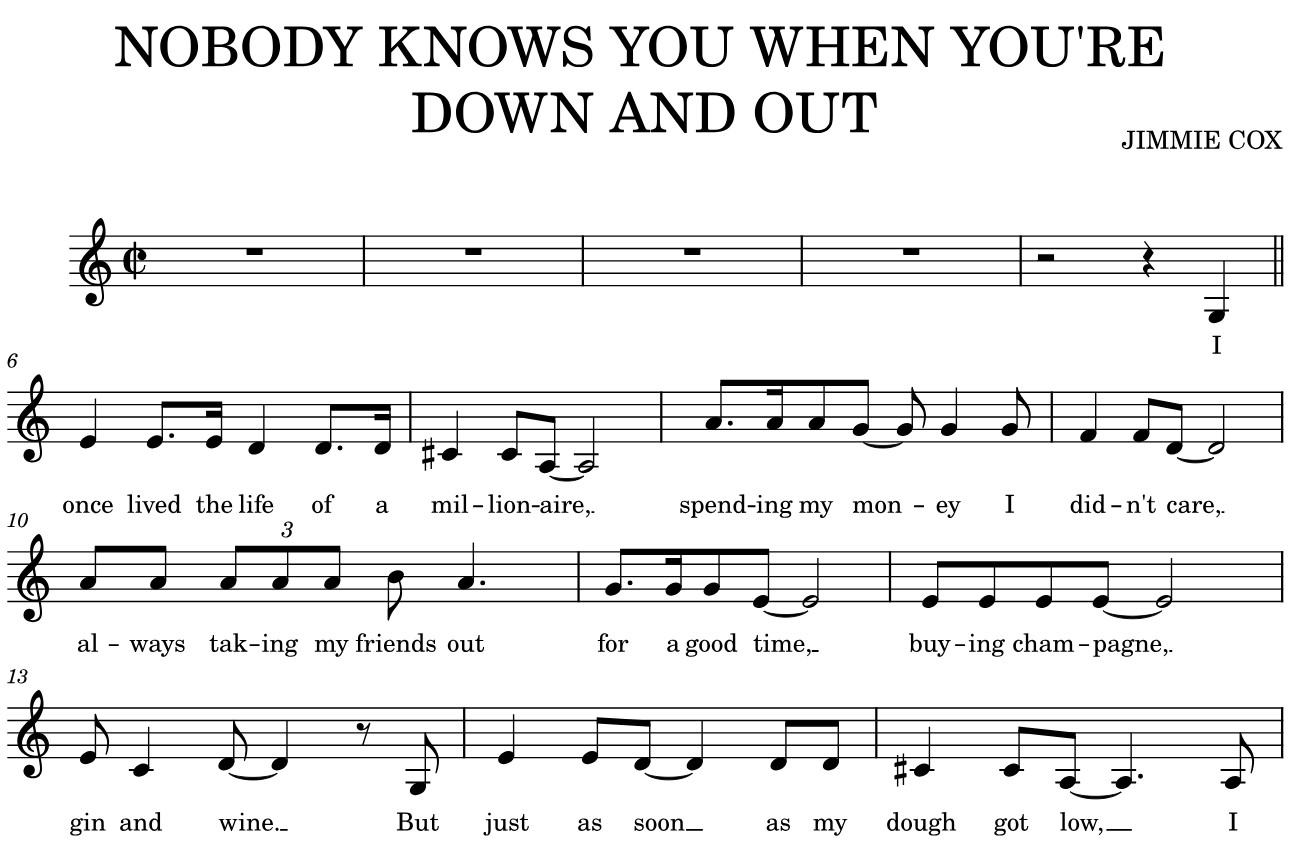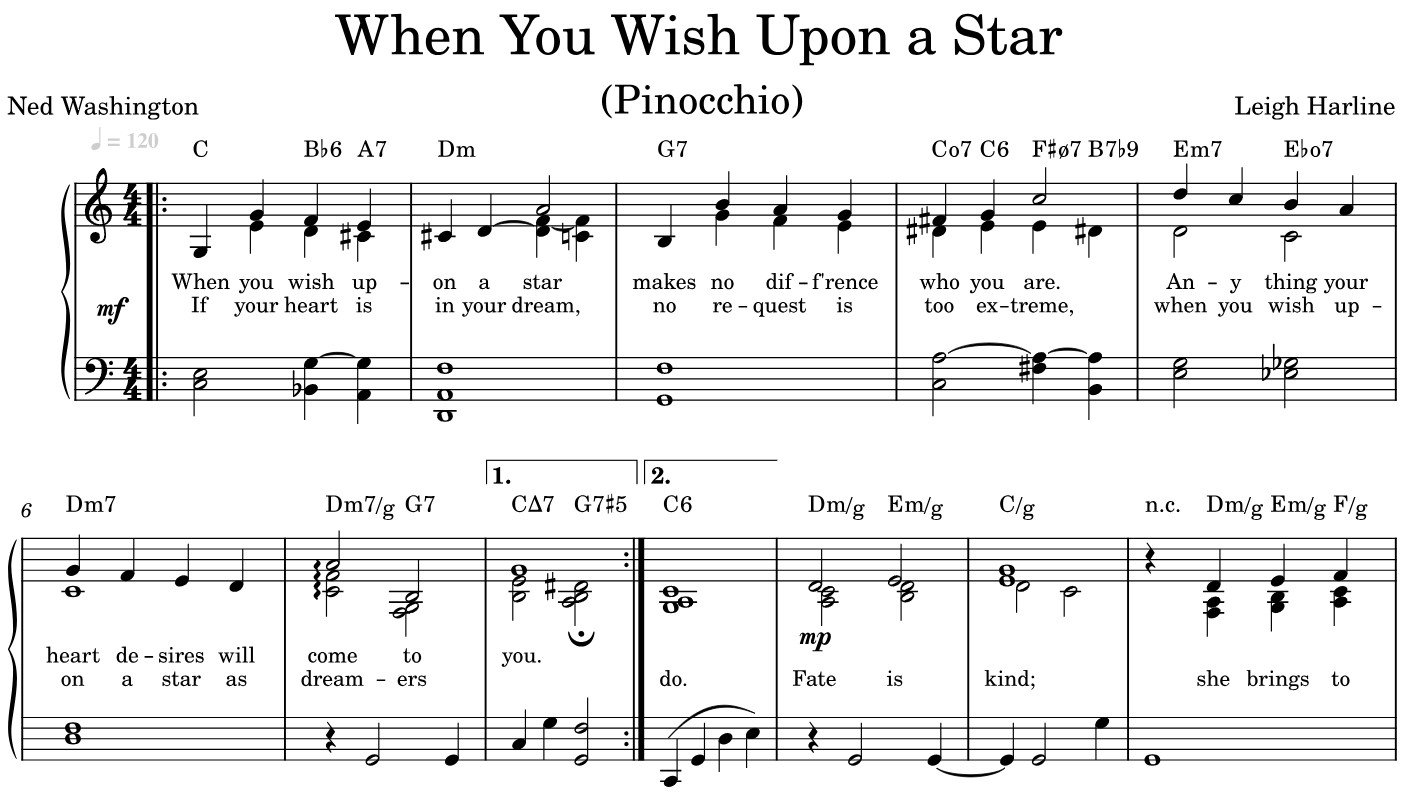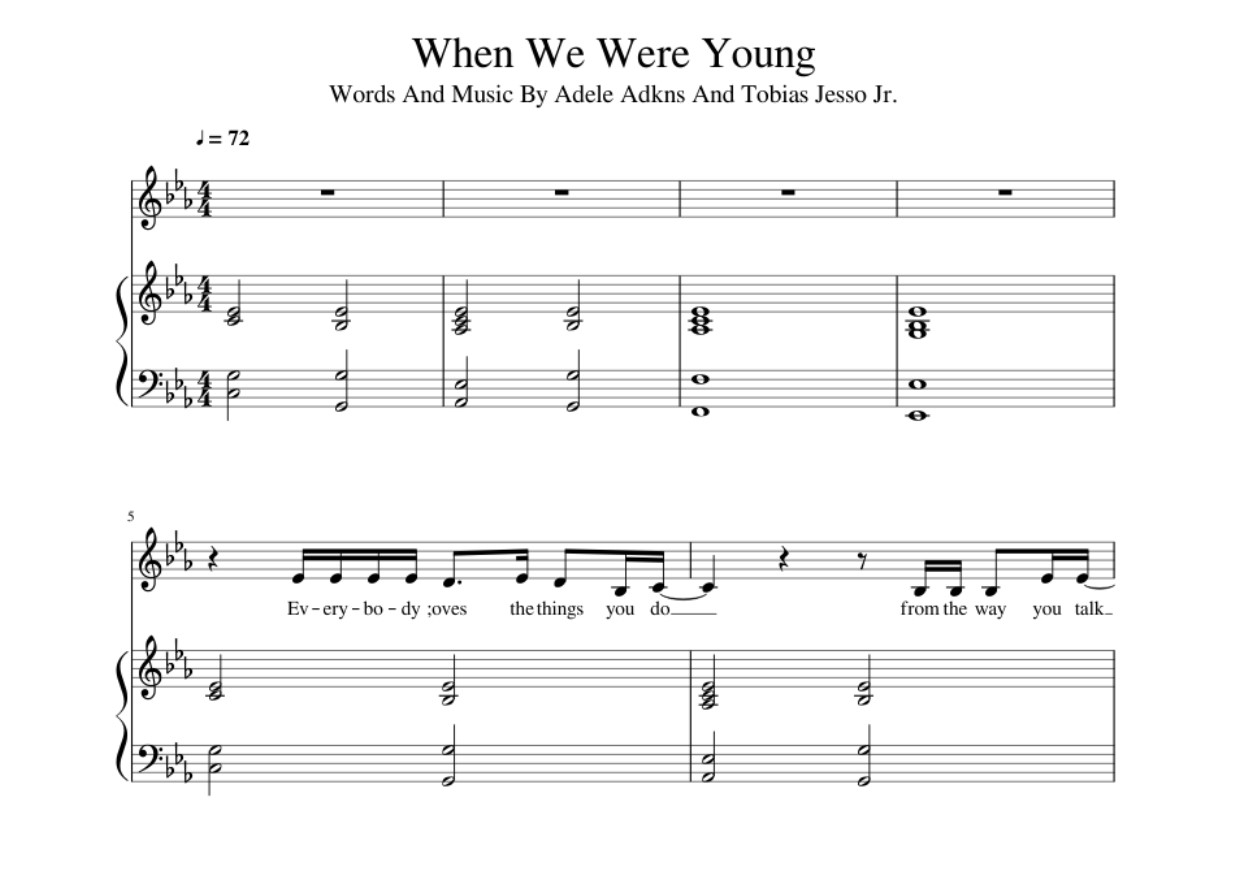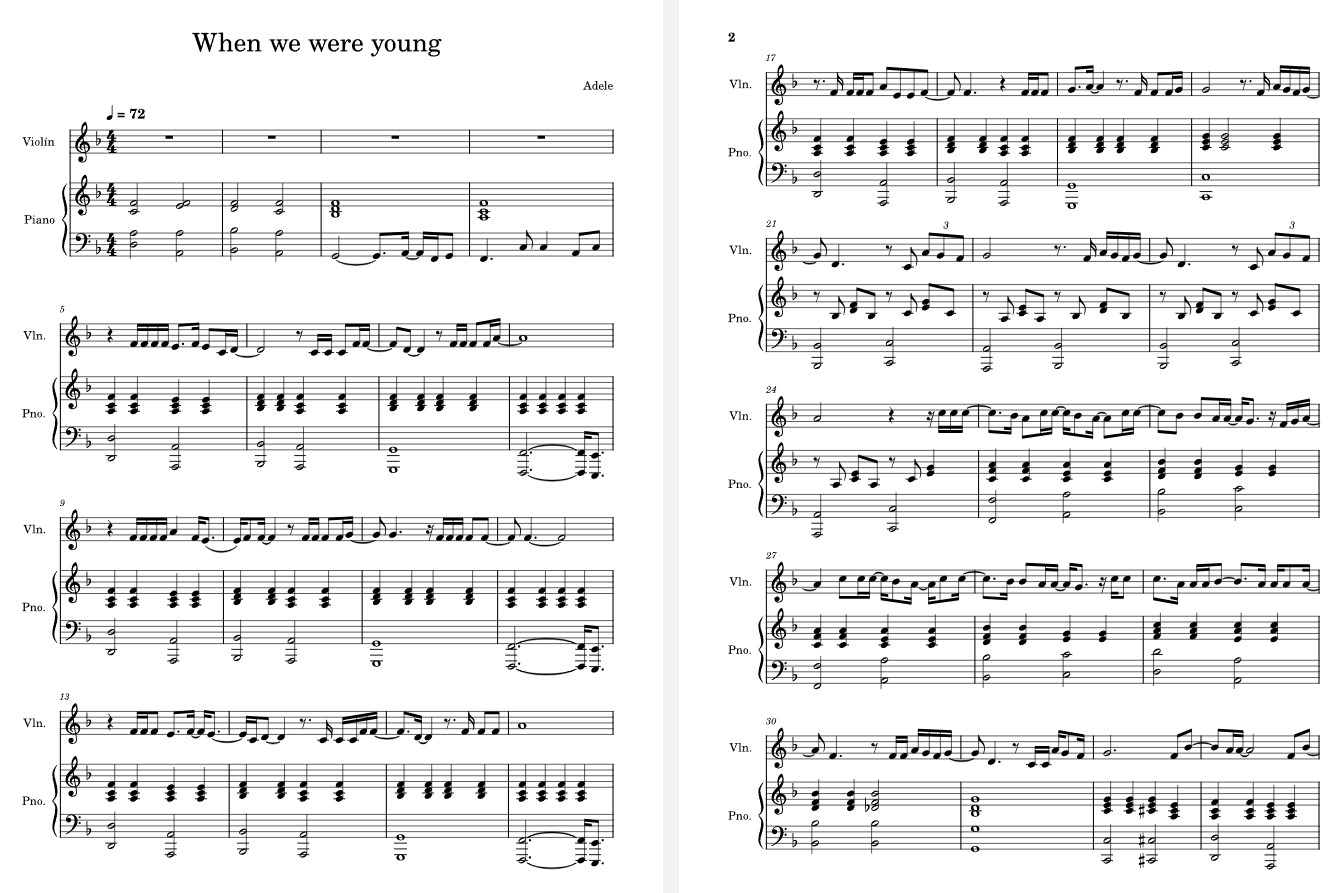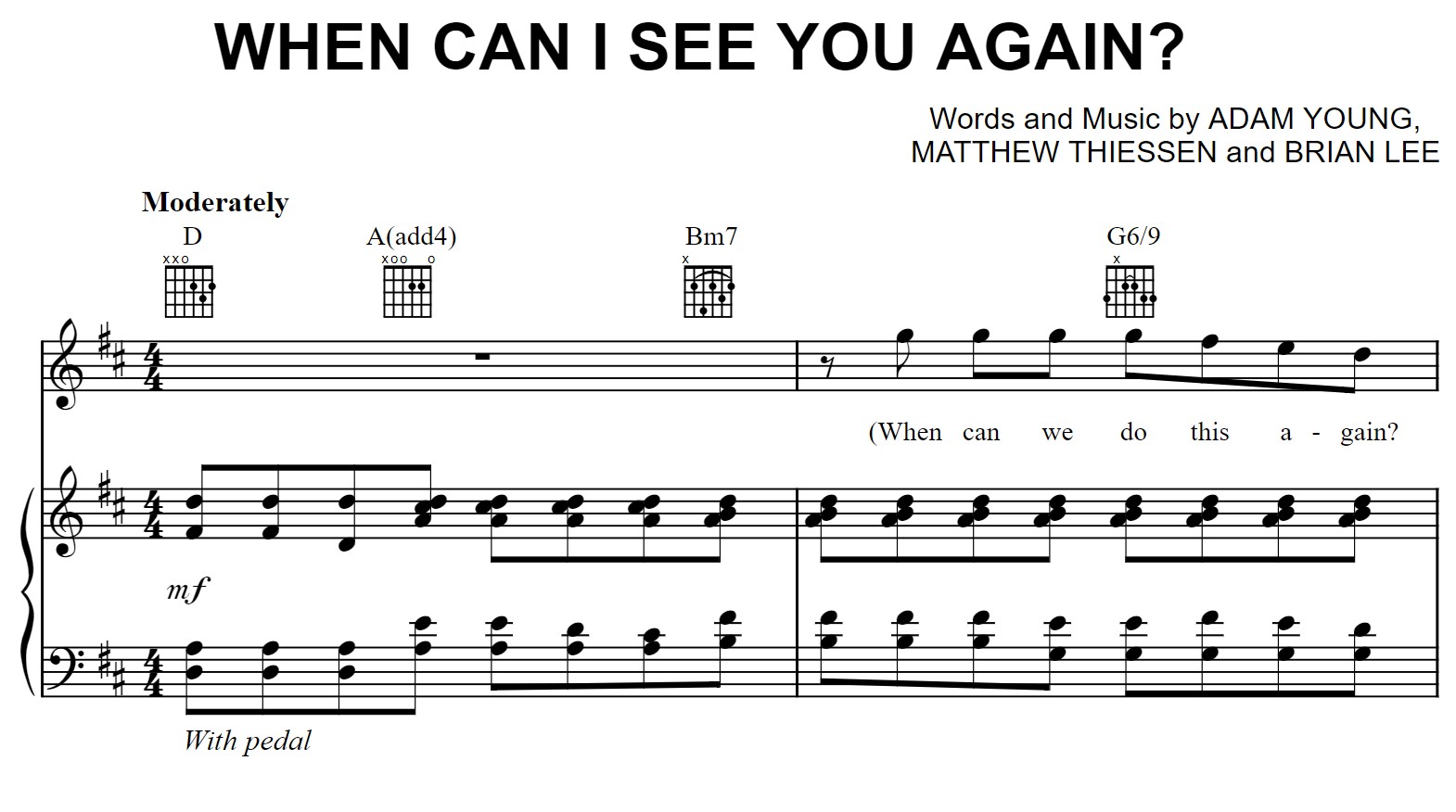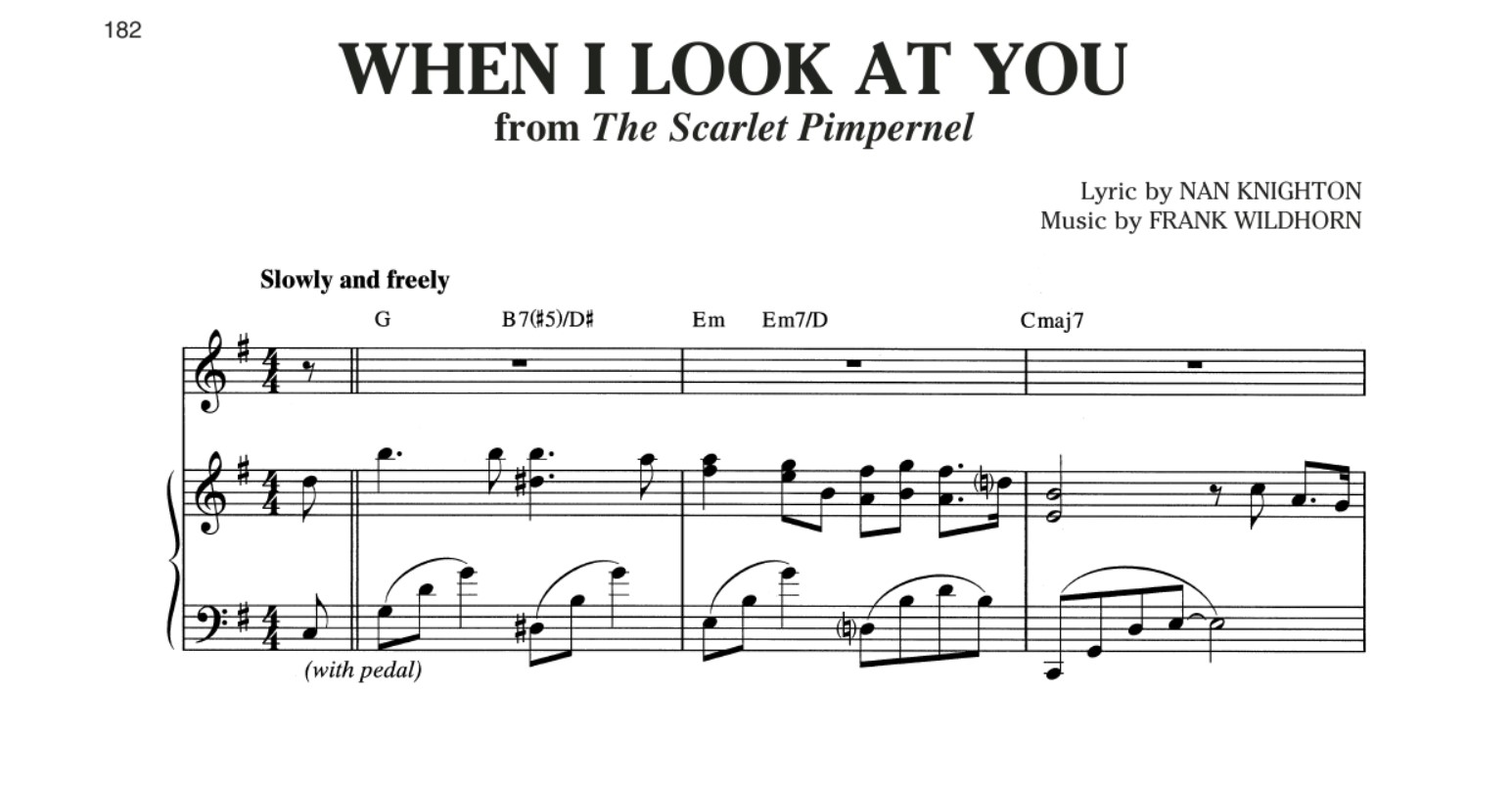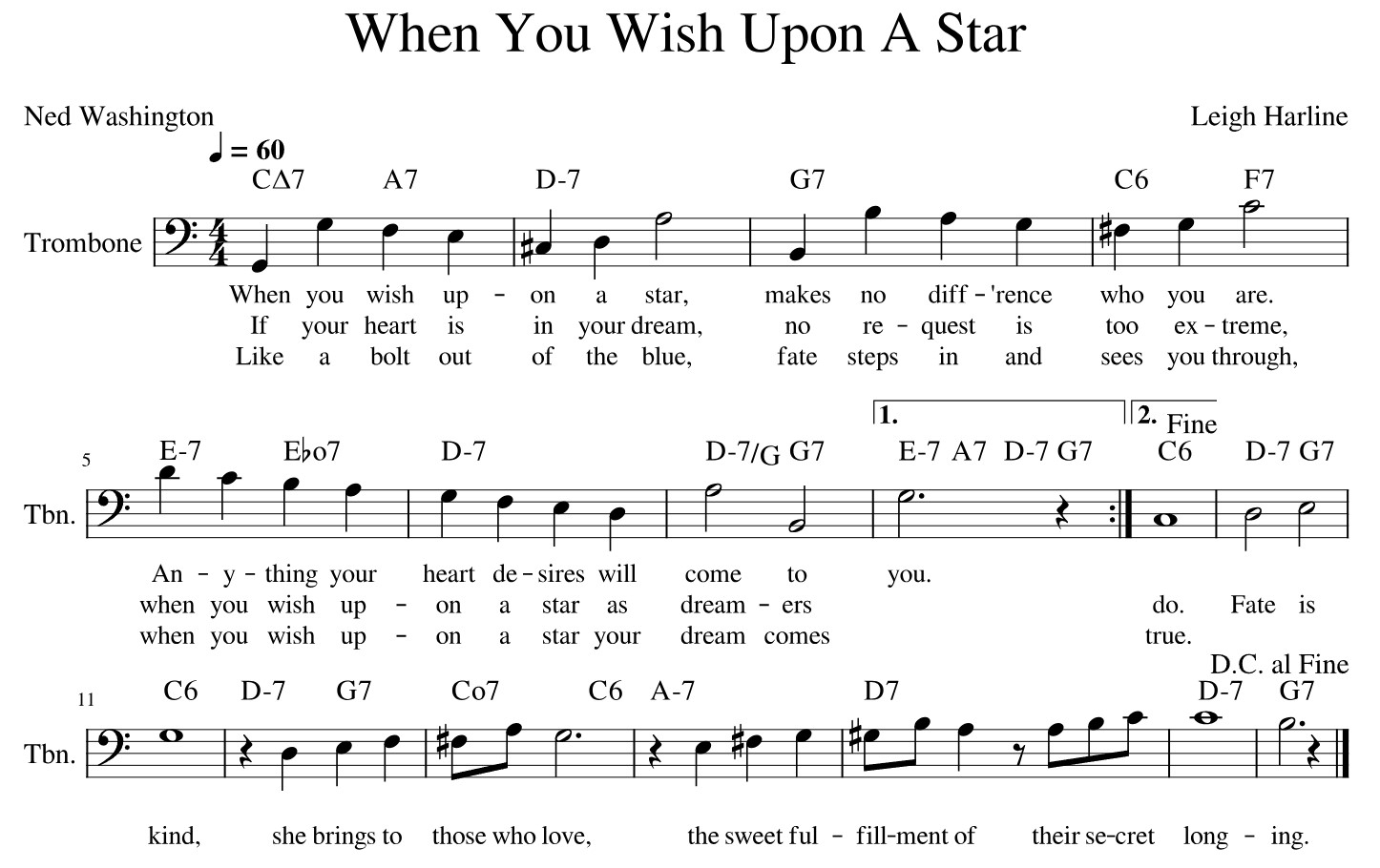Home>Production & Technology>Sheet Music>When You’re Smiling Sheet Music
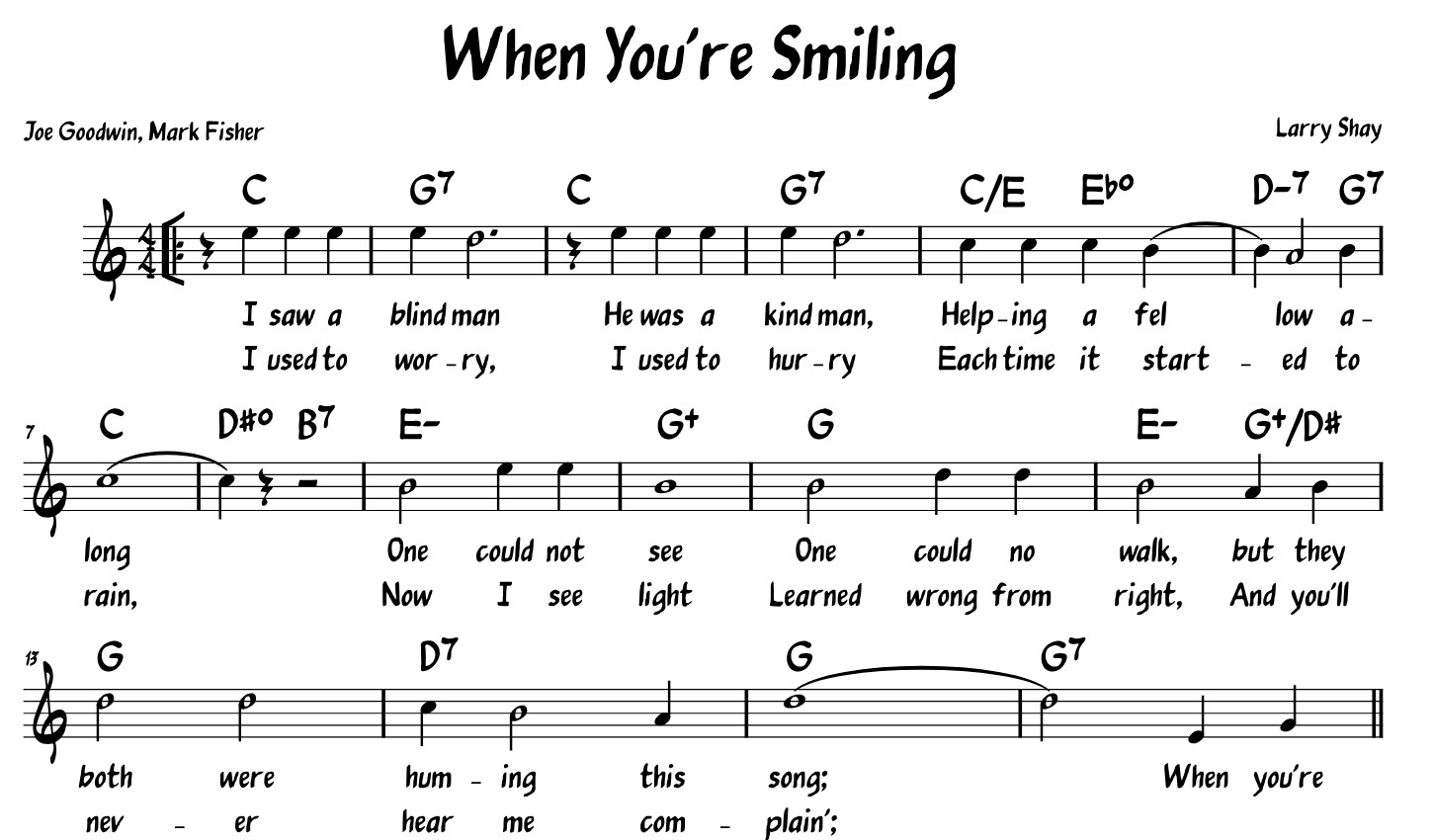

Sheet Music
When You’re Smiling Sheet Music
Modified: January 27, 2024
Get sheet music for "When You're Smiling" and learn to play it on the piano or guitar. Enjoy the catchy melody and uplifting lyrics.
(Many of the links in this article redirect to a specific reviewed product. Your purchase of these products through affiliate links helps to generate commission for AudioLover.com, at no extra cost. Learn more)
Table of Contents
Introduction
Sheet music is a fascinating medium that allows musicians to recreate and perform their favorite songs. Whether you’re an experienced pianist or a beginner guitarist, sheet music serves as a guide to help you play your instrument with precision and accuracy. If you’re a fan of classic tunes and timeless melodies, then you’ve likely come across the iconic song, “When You’re Smiling.”
This cheerful and uplifting tune has become synonymous with happiness and joy. Its catchy melody and inspiring lyrics have made it a popular choice for singers and instrumentalists alike. In this article, we’ll dive into the history of “When You’re Smiling,” explore the sheet music, analyze the melody and chord progression, discuss various arrangements and interpretations, and provide some useful tips for playing this beloved song.
But first, let’s take a moment to appreciate the significance of sheet music. Not only does it contain the musical notes and rhythms, but it also captures the essence and emotion that the composer intended. Sheet music allows musicians to interpret and express melodies in their own unique way, adding their personal touch to the composition.
Whether you’re a professional musician or an enthusiastic hobbyist, sheet music is a valuable tool that can enhance your musical journey. It’s a way to connect with the original intentions of the composer and delve into the intricate details of a song. Through precise notation and markings, sheet music guides musicians on dynamics, tempo, articulation, and more, ensuring a faithful rendition of the original piece.
Now, let’s explore the fascinating world of “When You’re Smiling” and uncover the beauty and complexity of its sheet music.
The History of “When You’re Smiling”
“When You’re Smiling” is a popular song that has stood the test of time since its creation in the early 1920s. The song was written by Larry Shay, Mark Fisher, and Joe Goodwin, and it has become an enduring classic in the realm of popular music.
The composition of “When You’re Smiling” was a collaborative effort between the three talented songwriters. Larry Shay was a trumpet player and bandleader, while Mark Fisher was a pianist and arranger. Joe Goodwin, on the other hand, was known for his skill in writing lyrics. Together, they combined their expertise to create a song that would win the hearts of audiences for decades to come.
The song was first introduced to the public in 1928 by musician and actor Seger Ellis. Ellis, with his smooth vocals and charismatic stage presence, helped popularize “When You’re Smiling” and make it a hit within the jazz community. The song gained further recognition when it was recorded by Louis Armstrong, an iconic figure in the world of jazz and a masterful trumpet player.
Louis Armstrong’s rendition of “When You’re Smiling” quickly became one of his signature songs. His infectious energy and unique improvisational style breathed new life into the song and made it an instant favorite among audiences. Armstrong’s iconic gravelly voice combined with his expressive trumpet playing added a level of authenticity and emotion that resonated with listeners.
Over the years, “When You’re Smiling” has been performed and recorded by numerous artists across various genres. From jazz and swing musicians to pop and rock artists, the song’s timeless appeal continues to captivate audiences of all ages. It has been covered by famous artists such as Frank Sinatra, Dean Martin, and Michael Bublé, solidifying its status as a beloved classic.
Beyond its musical accomplishments, “When You’re Smiling” has also become a symbol of optimism and positivity. The song’s lyrics, which encourage listeners to smile through life’s ups and downs, serve as a reminder of the power of a positive outlook. Its enduring popularity can be attributed to its ability to uplift and inspire, making it a timeless anthem for happiness.
So next time you hear the joyous melody of “When You’re Smiling,” remember the rich history behind this beloved song and the impact it has had on generations of music lovers.
Overview of the Sheet Music
The sheet music for “When You’re Smiling” provides a comprehensive guide for musicians to perform the song accurately. Like most sheet music, it contains both the musical notation and the corresponding lyrics, allowing vocalists and instrumentalists to synchronize their performance seamlessly.
The sheet music typically starts with the title of the song, followed by the names of the composers and lyricists. It may also include additional information such as the key signature, time signature, and the recommended tempo and style of the piece.
The musical notation in the sheet music consists of notes on a staff, indicating the pitch and duration of each note. The staff is divided into measures, and each measure is marked by vertical lines called barlines. This organization helps musicians keep track of the rhythm and structure of the song.
In addition to the melody, the sheet music often includes chord symbols, which indicate the harmonies that accompany the melody. These chord symbols are typically written above the staff and give musicians the flexibility to interpret and embellish the song according to their style and preference.
The sheet music also incorporates dynamic markings such as crescendo (gradually getting louder) and decrescendo (gradually getting softer), as well as articulation markings such as staccato (short and detached) and legato (smooth and connected). These markings provide guidance on how to shape and express the music, adding depth and emotion to the performance.
Furthermore, the sheet music might include written instructions or suggestions from the composer or arranger, indicating specific articulation techniques, stylistic nuances, or improvisational sections. These insights can greatly enhance the interpretation of the song, allowing musicians to bring their own musicality and artistry to each performance.
Whether you’re an experienced musician or just starting, using sheet music for “When You’re Smiling” can help you navigate the complexities of the song. It serves as a roadmap, guiding you through the melodic lines, chord progressions, and rhythmic intricacies, ensuring an accurate and captivating performance.
Now that we have a general understanding of the purpose and structure of the sheet music for “When You’re Smiling,” let’s dig deeper into the musical elements of the song and explore its melody and chord progression.
Melody and Chord Progression Analysis
The melody of “When You’re Smiling” is a delightful blend of catchy and uplifting phrases. It is primarily written in a major key, giving it a bright and cheerful quality. The melody spans a moderate range, making it accessible for a variety of vocal ranges and instruments.
The opening lines of the song begin with a catchy ascending melodic motif that establishes the cheerful mood right from the start. The melody then moves through a series of well-crafted phrases, incorporating melodic leaps, stepwise motion, and occasional syncopation to create a sense of musical interest and anticipation.
As for the chord progression, “When You’re Smiling” follows a classic and straightforward structure that is common in many popular songs. The song is typically played in the key of C major, although it can be transposed to a different key to fit the vocalist or instrumentalist’s range.
The chord progression uses a combination of basic major and dominant chords, providing a solid harmonic foundation. The most common chord progression for the song is C major (I), G7 (V7), C major (I), F major (IV), E7 (V7), A minor (vi), D7 (V7), and G7 (V7).
These chords create a sense of resolution and movement, driving the song forward and creating a pleasant harmonic journey. The dominant chords, G7 and D7, create tension that is then resolved back to the tonic chord, C major, giving the song a satisfying and familiar sound.
While the melody and chord progression form the backbone of “When You’re Smiling,” it is important to note that musicians are encouraged to add their own embellishments, improvisations, and variations to make the song their own. This flexibility allows for a personalized interpretation while still staying true to the essence of the song.
By understanding the intricacies of the melody and chord progression, musicians can approach “When You’re Smiling” with confidence and creativity, breathing life into the song and making it their own unique rendition.
Now that we have analyzed the melody and chord progression of “When You’re Smiling,” it’s time to explore the various arrangements and interpretations of this timeless classic.
Arrangements and Interpretations
“When You’re Smiling” has been interpreted and arranged in various styles, allowing musicians to put their own spin on this timeless classic. From jazz and swing to pop and even rock, the song lends itself to a wide range of artistic interpretations.
One of the most famous interpretations of “When You’re Smiling” is by Louis Armstrong. His rendition, infused with his signature trumpet playing and soulful vocals, captures the essence and joy of the song. Armstrong’s improvisational skills and unique phrasing add a level of spontaneity and charm to the performance, making it a standout interpretation.
Other artists have also taken their own approach to “When You’re Smiling.” Frank Sinatra, known for his smooth crooning style, brings a touch of elegance and sophistication to the song. His rendition showcases his impeccable vocal control and emotive delivery.
In the jazz realm, musicians like Ella Fitzgerald and Nat King Cole have offered their own interpretations, showcasing their impeccable vocal techniques and adding their personal style to the song. Their renditions emphasize the swing rhythms and melodic improvisations commonly associated with the jazz genre.
Outside of the jazz genre, “When You’re Smiling” has been reinvented by artists in various genres. In the pop world, Michael Bublé has put his own spin on the song, blending traditional crooning with a contemporary sound. His rendition maintains the classic charm of the original while infusing it with a modern flair.
Additionally, the song has been embraced by rock artists, who bring their own energy and instrumentation to the table. Artists like Rod Stewart and Eric Clapton have presented unique interpretations, incorporating elements of blues and rock into their performances.
It’s also worth mentioning the instrumental arrangements of “When You’re Smiling.” Pianists, guitarists, and other instrumentalists have crafted their own arrangements, showcasing their technical prowess and musicality. These arrangements often feature improvised solos and unique chord voicings, adding a personal touch to the song.
With such diverse interpretations and arrangements, “When You’re Smiling” remains a versatile and beloved piece of music. Each artist brings their own artistic flair to the song, highlighting its timeless appeal and ensuring its longevity for generations to come.
Now that we’ve explored the various arrangements and interpretations of “When You’re Smiling,” let’s move on to some tips for playing this joyful tune.
Tips for Playing “When You’re Smiling”
Playing “When You’re Smiling” can be a joyful and rewarding experience. Whether you’re a vocalist or an instrumentalist, here are some tips to help you bring out the best in your performance:
1. Capture the Joy: “When You’re Smiling” is all about happiness and positivity. As you play or sing, embody the joyful spirit of the song. Smile while performing and use your expression to convey the optimism and uplifting message of the lyrics.
2. Pay Attention to Dynamics: The sheet music may include dynamic markings such as crescendos, decrescendos, and accents. Pay attention to these markings and vary your volume and intensity accordingly. This will add depth and emotion to your rendition of the song.
3. Experiment with Chord Voicings: If you are accompanying yourself on an instrument like piano or guitar, try experimenting with different chord voicings. This will give the song a fresh sound while still maintaining its recognizable melody and chord progression.
4. Add Improvisation: “When You’re Smiling” lends itself well to improvisation. If you have the skills and confidence, feel free to add your own improvised solos or embellishments. This will showcase your musicality and give your performance a personal touch.
5. Emphasize the Swing Rhythm: Pay attention to the rhythmic feel of the song. “When You’re Smiling” has a subtle swing rhythm that adds to its charm. Emphasize the off-beats and syncopated rhythms to capture the playful essence of the song.
6. Experiment with Tempo: While the sheet music may provide a recommended tempo, don’t be afraid to experiment with different tempos. Adjust the tempo to suit your style and interpretation, whether you want a slower, more laid-back vibe or a faster, energetic rendition.
7. Engage with the Lyrics: If you’re singing “When You’re Smiling,” make a connection with the lyrics. Understand the message behind the words and let that emotion come through in your vocal performance. This will help you deliver a more heartfelt and authentic rendition of the song.
8. Listen to Various Interpretations: Take the time to explore different recordings and interpretations of “When You’re Smiling.” Listen to how different artists approach the song and gather inspiration from their unique styles. This will broaden your musical perspective and help you develop your own interpretation of the song.
Remember, while these tips provide guidance, the most important thing is to have fun and let your own musicality shine through. “When You’re Smiling” is a song that celebrates joy and positivity, and it’s your creative expression that will bring it to life in a way that is uniquely yours.
Now that you’re armed with these tips, go ahead and give it your all. Play or sing “When You’re Smiling” with passion and let the music spread smiles and happiness to all who listen.
Conclusion
“When You’re Smiling” is more than just a song—it’s a timeless anthem that encapsulates the power of positivity and the joy of music. Through its cheerful melody and inspiring lyrics, the song has touched the hearts of countless listeners and musicians around the world.
In this article, we have explored the history of “When You’re Smiling,” delving into its origins and the impact it has had on various musical genres. We’ve examined the sheet music, understanding its structure and significance in guiding musicians to faithfully perform the song.
We’ve analyzed the melody and chord progression, uncovering the key components that make “When You’re Smiling” so captivating. We’ve seen how it lends itself to a wide range of interpretations, from the smooth vocals of Louis Armstrong to the contemporary stylings of Michael Bublé.
We’ve also provided tips on how to approach playing or singing “When You’re Smiling,” encouraging musicians to embrace the joy, experiment with dynamics and chord voicings, and add their own personal touch through improvisation.
Ultimately, “When You’re Smiling” reminds us of the power of music to uplift and unite people. It encourages us to face life with a positive attitude and find joy in even the simplest of moments. It’s a song that brings smiles to faces and spreads happiness wherever it is performed.
So, the next time you pick up your instrument or step up to the microphone, consider adding “When You’re Smiling” to your repertoire. Let the music fill the air with joy and embark on a musical journey that celebrates the power of a smile.
Embrace the history, explore the sheet music, play with the melody and chord progressions, and make it your own. Sing it with enthusiasm, strum it with passion, or swing it with finesse. However you choose to perform it, remember to let your own spirit and creativity shine through.
Bring a smile to your own face and to the faces of those who listen. Because when you’re smiling, the whole world smiles with you.


